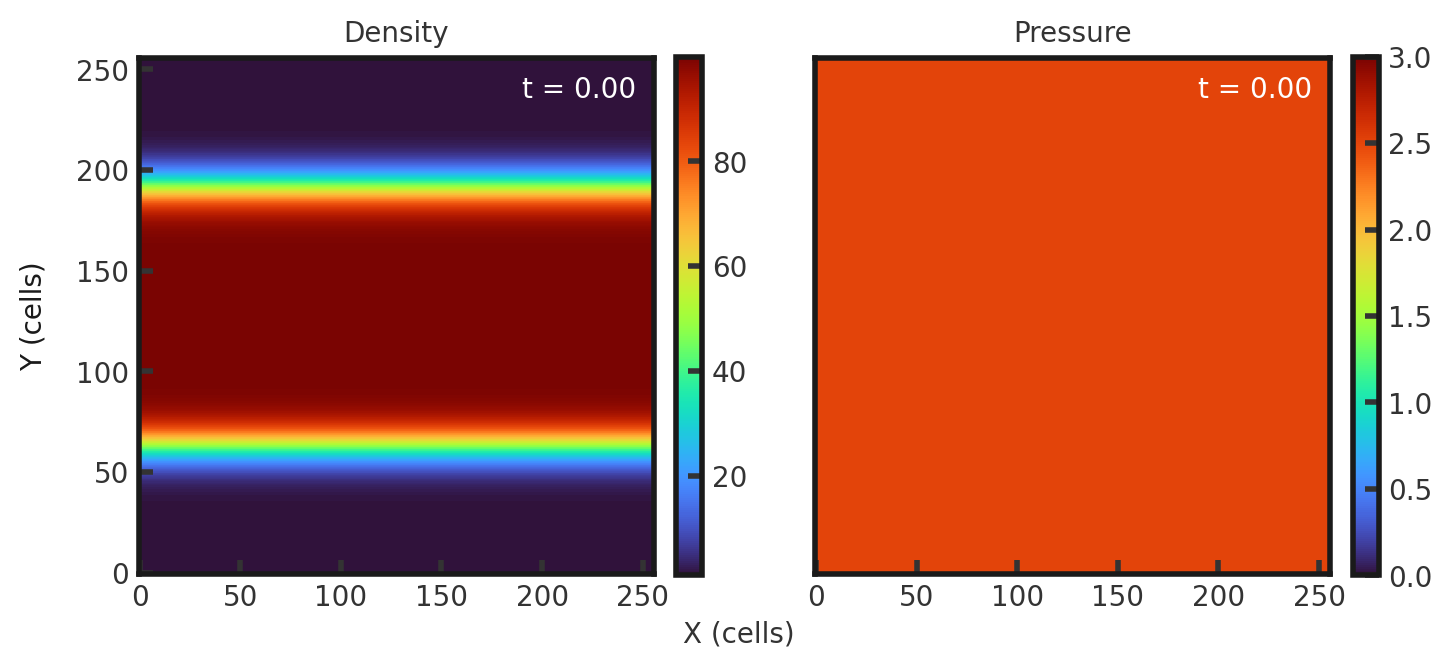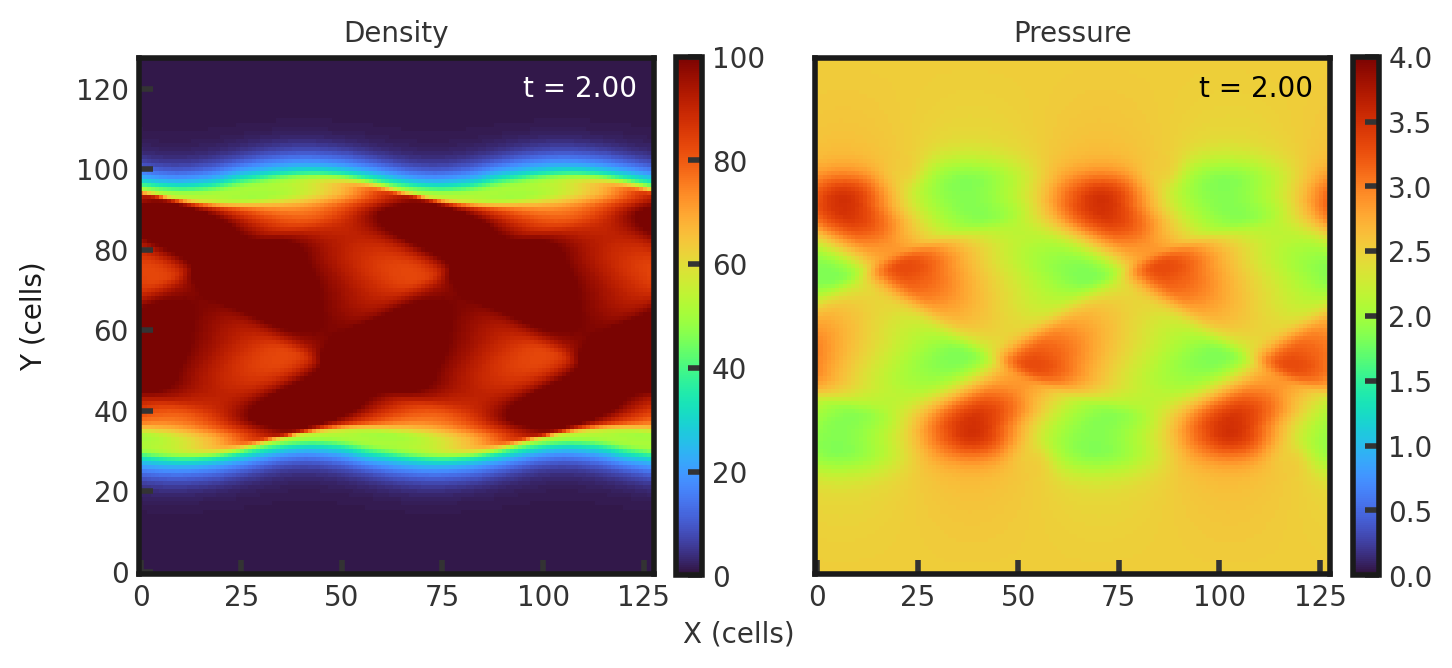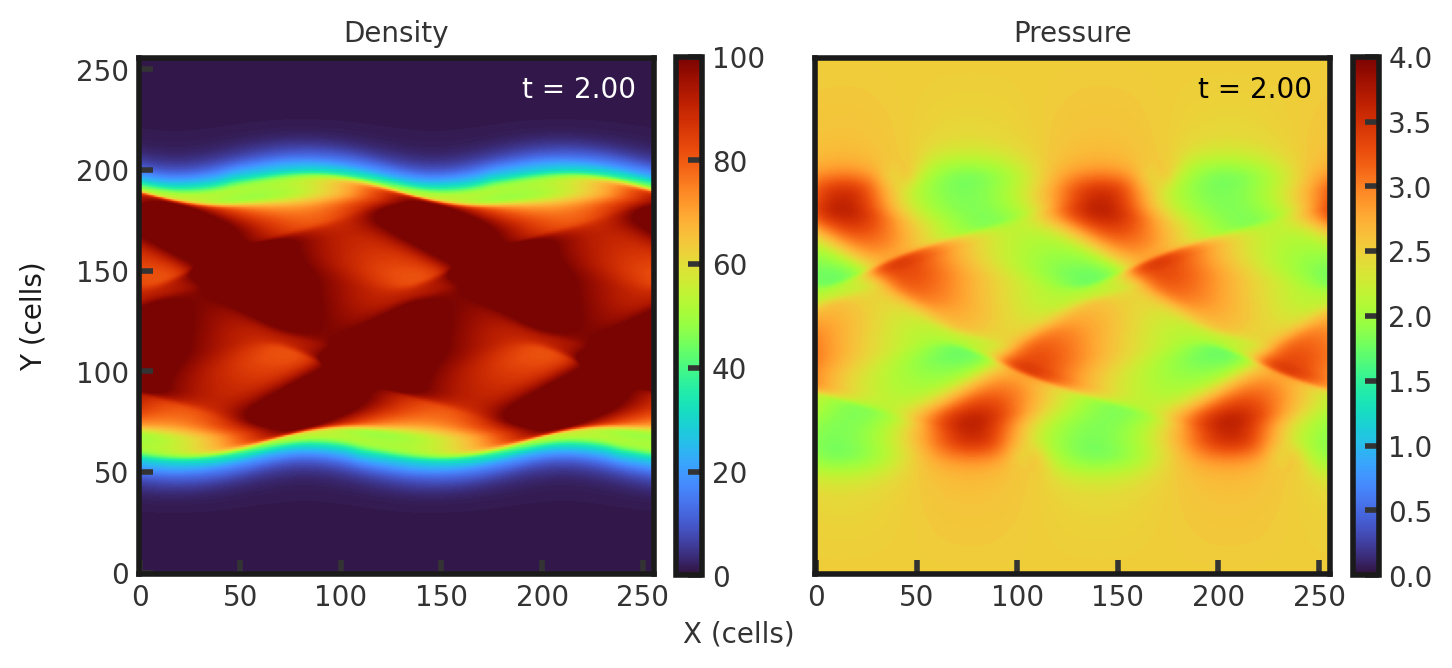-
Notifications
You must be signed in to change notification settings - Fork 32
2D KH Resolution Independent
This test highlights the ability of a code to resolve mixing caused by shear flows, emphasizing the importance of an efficient, high order reconstuction method and a fast code. In general, the level of mixing would increase with the resolution; however, this is a resolution independent version. The test consists of a region of higher density (100) sandwiched between two regions of lower density (1.0). The high density layer has a velocity of 10.5 and the low density layers have a velocity of 9.5. Pressure is set to 2.5 and a 1% pertubation (amplitude of 0.1) is added to the high density layer to provoke the instability. Gamma is set to 1.6666666666666667. This test is performed with the default hydro build (cholla/builds/make.type.hydro) and Van Leer integrator. Full initial conditions can be found in cholla/src/grid/initial_conditions.cppunder KH_res_ind().
#
# Parameter File for the 2D resolution independent Kelvin-Helmholtz test.
#
######################################
# number of grid cells in the x dimension
nx=128
# number of grid cells in the y dimension
ny=128
# number of grid cells in the z dimension
nz=1
# final output time
tout=2.0
# time interval for output
outstep=0.01
# value of gamma
gamma=1.6666666666666667
# name of initial conditions
init=KH_res_ind
# domain properties
xmin=0.0
ymin=0.0
zmin=0.0
xlen=1.0
ylen=1.0
zlen=1.0
# type of boundary conditions
xl_bcnd=1
xu_bcnd=1
yl_bcnd=1
yu_bcnd=1
zl_bcnd=0
zu_bcnd=0
# path to output directory
outdir=./
Upon completion, you should obtain 201 output files. The initial and final densities and pressure for two different resolutions (in code units) of a slice along the y-midplane is shown below. Default resolution (128x128) is compared to a high-res version (256x256). Examples of how to plot projections and slices can be found in cholla/python_scripts/Projection_Slice_Tutorial.ipynb.
Initial conditions:

Lower resolution solution:

Higher resolution solution:

The solution does appear to be independent of resolution. We can also compare the time evolution of the density at the above resolutions. These were simulated until t = 5 to observe the breakdown of the nonlinear regime:
The evolutions are almost identical during the linear regime.